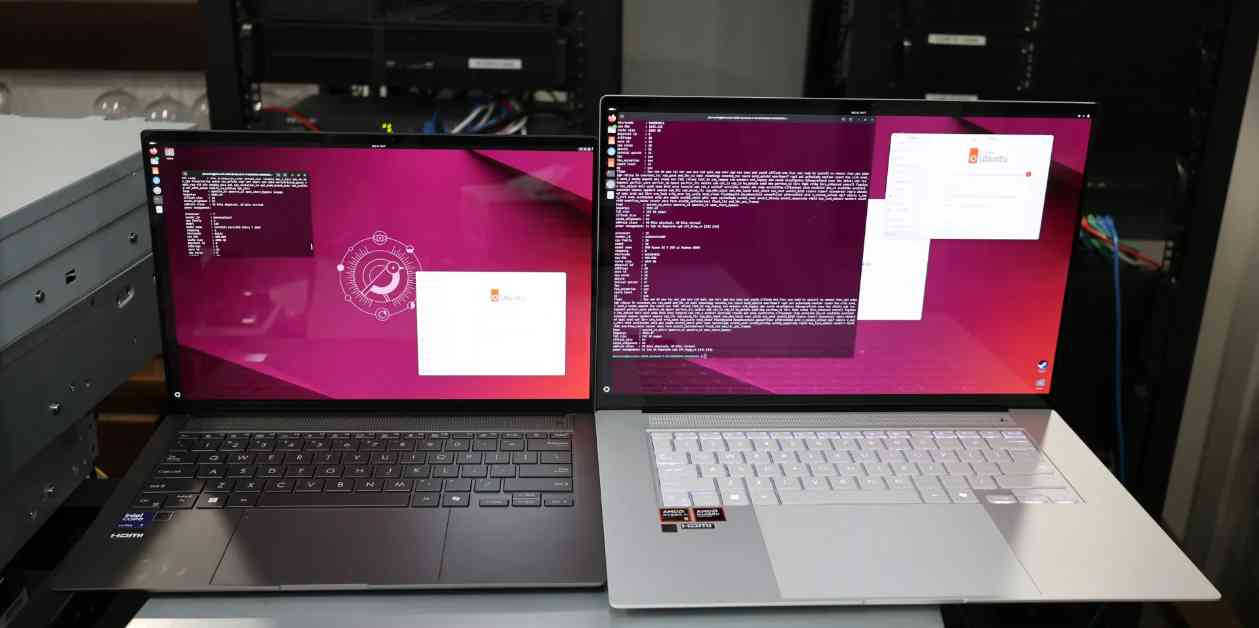I recently got my hands on an ASUS Zenbook S 14 Lunar Lake laptop to conduct some Linux compatibility and performance testing. The experience wasn’t as smooth as I had hoped, especially compared to previous Intel Core mobile launches that usually worked well right out of the box.
My initial benchmarks on Lunar Lake’s Intel Xe2 graphics performance on Linux were disappointing. The graphics performance with the ASUS Zenbook S 14 was slower than the previous generation Meteor Lake graphics and couldn’t compete with the AMD RDNA3.5 graphics found in the new Ryzen AI 300 Strix Point laptops. Linux graphics performance was also significantly lower than on Windows 11, which came pre-loaded on the ASUS laptop.
In early October, I ran some Lunar Lake CPU benchmarks on Ubuntu Linux. While Lunar Lake CPU performance was good for single-threaded workloads, it fell short for creator and programming workloads compared to the Ryzen AI 300 series with Zen 5 CPU cores.
I recently conducted Windows 11 vs. Linux CPU benchmarks for the Core Ultra 7 256V, and I have since been running benchmarks on the Core Ultra 7 256V with Zenbook S 14 vs. Ryzen AI 9 365 with Zenbook S 16 Linux across different ACPI Platform Profiles on each laptop. I wanted to see how altering the power/performance heuristics with ACPI Platform Profiles would affect Lunar Lake’s performance compared to Strix Point and whether the power-saving mode on Strix Point could match Lunar Lake’s power efficiency.
After communicating my Xe2 graphics performance results to Intel, they were able to reproduce the Linux graphics performance issue and identified the root cause. It turns out that the ASUS Zenbook S 14 boots into a “whisper” mode on Linux, which results in different power consumption compared to the “standard” mode on Windows 11. Intel is working with ASUS to address this behavioral difference under Linux, but there is no immediate solution.
I also shared some unpublished OpenCL compute benchmarks for Lunar Lake with Intel, which showed various problems. Intel confirmed that a separate fix is in the works, and OpenCL performance benchmarks will be available once the issue is resolved.
Today’s benchmarks focus on the ACPI Platform Profile performance on Ubuntu 24.10 with the Linux 6.11 kernel on the ASUS Zenbook S 16 with Ryzen AI 9 365 and the ASUS Zenbook S 14 with Core Ultra 7 256V. Both laptops were tested using the “power,” “balance_performance,” and “performance” ACPI Platform Profiles, with a focus on CPU/system performance due to the Xe2 graphics issues.
The Core Ultra 7 256V has 16GB of memory, while the Ryzen AI 9 365 laptop has 24GB. Both laptops retail for around $1400-1500 USD. The Ryzen AI 9 365 laptop used a patched Linux 6.11 kernel build for Zen 5 RAPL/PowerCap power monitoring support.
In conclusion, the current performance of AMD Strix Point and Intel Lunar Lake on Ubuntu 24.10 with Linux 6.11 shows room for improvement, especially for Lunar Lake on Linux. While there are challenges to overcome, both Intel and AMD are working on enhancing their SoCs’ performance on Linux, promising better results in the future.













